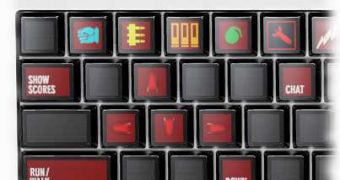This is a future-of-tech story that has been heard before. Art Lebedev, a Russian art designer, promised to reveal at this year's CeBIT the Optimus Maximus. No, it's nothing related to the Roman Empire. It's actually a keyboard with small OLED (organic light-emitting diode) screens on each key. Turns out he came empty handed at the show.
It sounded too good to be true. At least, he showed up to explain what's it all about. Here's the idea behind this possible concept. Users will be able (maybe) to change the key displays to suit different languages and applications, switching the keyboard layout from Cyrillic to English, for instance (interesting idea, too good to be true though). Although it had no device to show CeBIT attendees, Lebedev announced that the device will be available in November for 1500 $ (at least the deadline was fixed). Once out in the shops, it will probably allow us to better understand signs (take Chinese ideograms for instance). I'm pretty sure that the device would've helped Lebedev prove the story at CeBIT (at least when it comes to communicating with foreign investors). Maybe it's just DPB (deadline project problem).
"Anyone can do a keyboard that costs ten dollars, just simple plastic keys. But when you put displays inside the keys you face a lot of problems. There are hundreds of problems waiting for you at every corner," Lebedev said. Oh yeah. Come to think again, maybe it's a PBKC (problem between the keyboard and the computer). Or PICNIC (problem in chair, not in computer - not the case here). In the end, it turned up that there was indeed a real PBKC.

 14 DAY TRIAL //
14 DAY TRIAL //